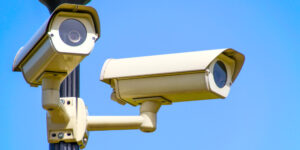17 Reasons Why You Should Use Remote Desktop Software
Are you working at home for part of the week and in the office during the other part? Are you tired of lugging your computer back and forth to work? Maybe you need remote desktop software to help simplify your life.
If you want to learn how to work more efficiently, be more mobile, reduce costs, and be eco-friendly, then keep reading to learn the top reasons why you should use remote desktop software.
Throughout my years working in technology as a developer and manager, remote desktop software has proven to be the most valuable asset in my toolbox.
Let’s take a look at the reasons.
Introduction
Remote desktop software provides control of another computer, server, or device located elsewhere, among other things.
Most remote desktop software has two main components: the remote computer and the client computer. The server software runs on the remote computer, and the client software runs on the device accessing the remote PC.
Remote desktop apps provide access control of another computer and allow users to manage one or more computers from the client application.
Business professionals use remote desktop software to access a work computer from home.
Remote Desktop software is also used to support people with disabilities or people who don’t have access to a computer nearby.

How To Start
The software download is the first step in connecting to a remote computer. You will need to download and install software for the client computer and another for the remote computer. Choose the right download for the operating system used by the computers.
There are many different flavors of remote desktop software, so finding the best one for your needs can be challenging. Some of the most popular include Splashtop Remote Desktop and TeamViewer. Other pay-for remote desktop software includes AnyDesk and GoToMyPC.
I prefer the free kind, and open-source is even better. Open-source remote desktop software, such as RustDesk, offers the same features and functionality as the paid versions but, in some cases, provides superior security and better tools to access remote computers across the internet without exposing your local network.
1. Improved Work Flexibility
Remote desktop software lets people work from anywhere. It’s an excellent tool for people who have to travel a lot or want to work from home but not transport a bulky or expensive computer. Remote desktop software also makes it easy for people to avoid the hassle of having to travel back and forth between two places all the time, especially for people with long commutes.
2. Better Technology Sharing
Access to up-to-date technology means employees can do their jobs better. Remote desktop software allows team members to share the latest computing technologies. This provides employees with greater access and more flexibility to the right tools resulting in a more efficient, accurate, and knowledgeable workforce. Businesses that utilize shared assistants are reaping dividends.
3. Accessing Secured Data
Accessing remote data locked behind a network firewall can limit remote work options. This problem is solved by using remote desktop software connecting to a computer behind that firewall.
When used with Cloud platforms like AWS, Azure, or GCP, remote connections can support the ideal computing setup. These multi-faceted platforms often involve centralized storage of data that needs to be accessed by multiple people. In addition, If something happens to your device, you can always get your data back by remotely signing in on another device to retrieve it.
4. Future-Proofing Technology
Since your team’s computers are accessible by both the employee and IT staff, software and hardware shared by your team are kept current, updated, and secured. IT and system administrators can provide the best, latest, and most impactful solutions without the team finding their own IT support or buying unnecessary hardware. IT personnel can leverage a centralized strategy keeping everyone in the loop and with the latest hardware, software, and updates.
5. Enhanced Security
Tech companies often shop around to find the best security software because a primary concern is protecting the entire infrastructure. With a remote access strategy, IT can ensure that software – like all anti-virus, malware, and network protection tools – is always up to date and incorporates the latest security patches. All of this is done automatically and remotely so employees don’t have to worry about it.
6. Better Control of Assets
Establishing remote control of the PC using a remote desktop application allows control over your computers so that if the computer needs to be serviced, updated, or monitored, it can be done remotely.
7. Increased Productivity
Whether it is the growth of a business or family, adding new computers will require you to invest in more bandwidth, peripherals, and computing hardware. When you need more computing to meet increased demands, it is easy to scale and temporarily add more computers. This means you can provide capacity during times of acute demand without the need to buy new computers.
8. More Cost Savings
The remote desktop software allows you to share a computer. That way, it is easy to set up a single computer with a single account and share that account remotely with a set of workers. Multiple employees can use that computer to leverage a single license for expensive software or expensive web services. This saves the organization money by reducing the number of software or service licenses needed by employees.
9. Use of Any Operating System
Clients don’t all need to be using Microsoft products but could instead use macOS or Linux to access business computers. You can allow some level of flexibility for this, with clients using Linux to connect from their browsers or using Android devices to connect to those computers too.
10. Better Asset Management
All of your remote computers are at your fingertips from one central dashboard. You can edit people’s permissions to specific groups or limit access to parts of their work PC. This is much easier than constantly adjusting permissions for particular people by visiting each computer in person. It’s also great for managing business networks from one place. Along with these features, some remote desktop tools allow you the chat with remote users and even monitor the network connection and bandwidth usage.
11. Helping the Environment
With remote access to computers, less physical travel is needed between the office and home, and even from the IT staff to the cubicles housing employees. In an environment using remote desktop software, the employee’s computers can be kept alongside the IT staff management and monitoring them. Less room to house employees, less room to store the PCs, and less travel to run the computers all lead to a more eco-friendly environment.
12. Leveraging Old Compute Power
Remote desktop software allows you to reduce spending by leveraging older devices to perform other tasks needed by other people. While an older computer may not be able to run the latest and most sophisticated Computer-Aided Design (CAD) software, it might be perfectly capable of viewing web pages, printing presentations, and sending emails, offloading more powerful computers from those tasks
13 Sharing Bandwidth
Most people purchase broadband services from a local service provider to support 4K video streaming and low-latency gaming. Remote workers can leverage this collective bandwidth to provide a much larger total capacity than a company can offer.
14. Better Interoperability
Because remote desktop software developers create client applications to run on various operating systems, the tools embedded into the client applications provide a standard set of capabilities allowing clients to interoperate. In other words, a connection to a remote PC enables the user located at that remote PC to chat with those clients attached to it or download and upload files.
15. Supporting BYOD
Due to the nature of remote sharing, users can access remote systems and are free to use any computing device, even mobile, for which the remote desktop client is available. Employers can support a Bring Your Own Devices (BYOD) strategy.
16. Better At Home IoT Security
We now have many IoT devices at home, such as security cameras, thermostats, and even earthquake monitors. While the convenience of connecting each to the Internet might seem appealing, it does expose each device to a data breach or security hack. Installing a remote desktop server at home allows us to remove all those individual connections and replace them with a single connection to a single PC to monitor those at-home devices.
17. Monitoring Remote Workers
I saved the most controversial reason for last. While we don’t like to be monitored at work, remote desktop software allows companies to monitor people’s activity when working remotely. This is undoubtedly important when advocating a work-from-home strategy to skeptical executive management.
Final Thoughts on Remote Desktop Software
In this post, I’ve covered 17 reasons you should use remote desktop software. I like free, open-source options. If your boss needs convincing, share these tips. The reasons are valid for small and large companies looking to become travel, mobile, or eco-friendly.



